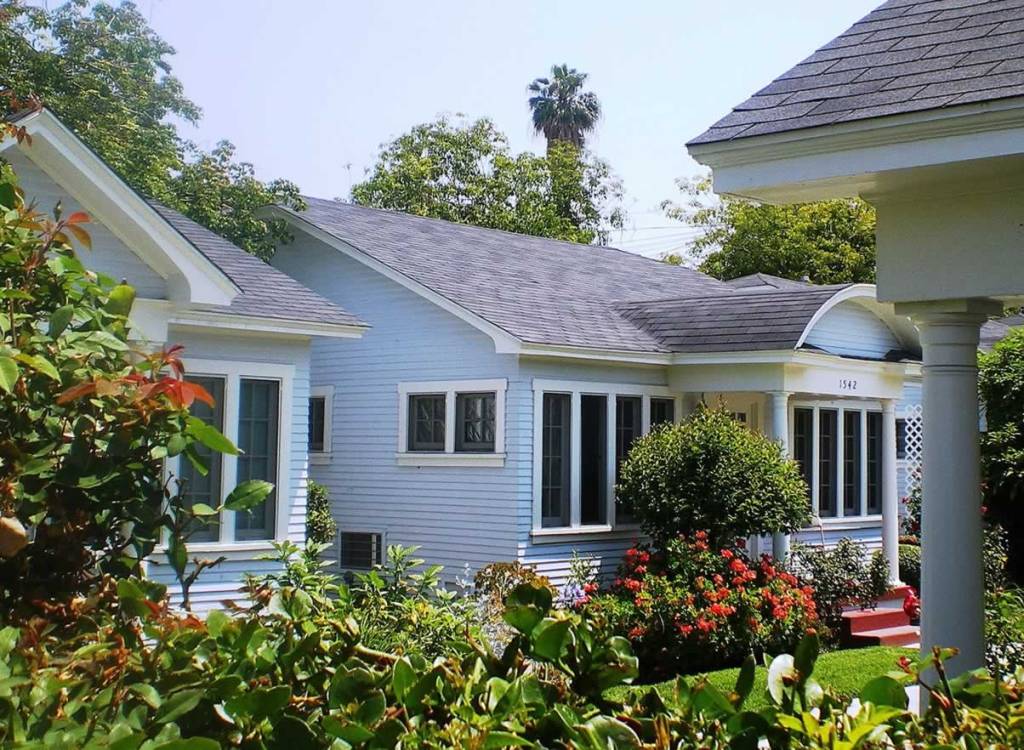It’s not a commonly used phrase, but “cottage courts” could be an increasingly common reality in a country that continues to need novel solutions to address severe housing shortfalls. Some organizations and local officials see them as a potential path forward for older Americans seeking to age in place.
According to a 2022 report from AARP, cottage courts are defined as a small collection of bungalow-style homes that are “typically 1 to 1½ stories tall and are oriented around a courtyard that serves as an outdoor community space in lieu of rear yards.”
The report added that cottage courts “typically have shared parking areas,” with many including “a common building that can be used for community gatherings or reserved for private parties. Since the homes are small, the developments sometimes offer shared laundry facilities, storage spaces and secondary housing units that can accommodate guests.”
AARP added that this type of home “is very compatible with houses in single-family zones.”
Some have compared the cottages to bungalows, but the shared “court” area — which could be a shared patch of grass at the center of a sidewalk that extends to the porches of the individual dwellings — is seen as a key community-building element to encourage a sense of camaraderie among residents.
The cottages themselves are similar in size and scale to accessory dwelling units (ADUs), but they serve as separate structures as opposed to an ADU that is commonly situated on another property. Because of the similarities, however, some housing advocates say that cottage courts could be yet another potential tool to be deployed for older Americans seeking to age in place.
In a recent interview with Marketplace, Washington Post columnist Heather Long discussed some of her findings that went into a recent op-ed titled, “The new American Dream should be a townhouse,” co-authored with visual opinions journalist Amanda Shendruk. Long described learning about cottage courts for the first time.
“I didn’t even know what a cottage court was until I started researching all of this, but a lot of young people like them because they’re low-maintenance lifestyle,” she said. “You don’t have to spend every weekend raking the leaves and doing the yard. […] You can fit more of these types of houses near a public transit hub or near a lot of grocery stores and amenities, but it’s just a lot more affordable.”
For older adults who may struggle with maintaining a full-sized single-family home, the prospect of having an independent dwelling without extra maintenance work could be enticing. Because older people are known to experience problems with social isolation and loneliness, cottage courts could encourage a sense of community.
At least one community in South Carolina sees the potential for cottage courts for older people looking to age in place, but it is facing fierce opposition from community members. In Mount Pleasant, the city council recently held a hearing to address a recommended elimination of cottage courts, according to local reporting by the Moultrie News.
Council member Daniel Brownstein introduced himself as a supporter of the structures, saying that they “give the aging population the option of downsizing from the ownership of a large property,” according to the report.
“I think if they were to be built, you would find it to be one of the most popular housing developments in Mount Pleasant,” Brownstein said in appealing to his colleagues to allow cottage courts in an upcoming ordinance. “But I hear from folks [that] they’re upset when the entire lot is covered by a gigantic home. And this would present an alternative to that.”
Others expressed alternative perspectives that instead of expanding housing options for the city’s population, cottage courts would lower property values by being added to the area’s comparable sales. They also might not be as attainable as proponents suggest and could provide an unwelcome increase in population density.
But by including cottage courts in its 2022 report about “missing middle” housing, AARP contends that such structures can play a role in securing the housing goals of older Americans.
“Missing Middle homes provide the size and affordability options that people of all ages — including older adults — very much need but often can’t find,” the report explained.





